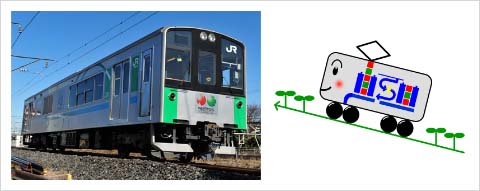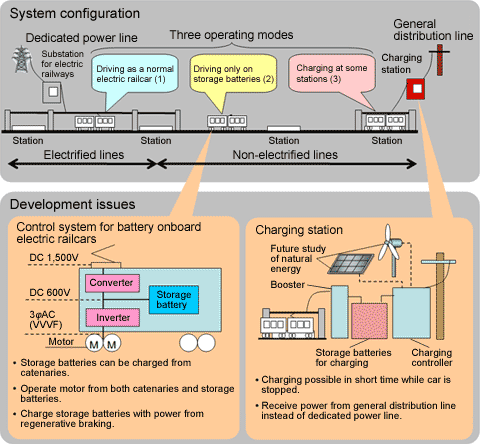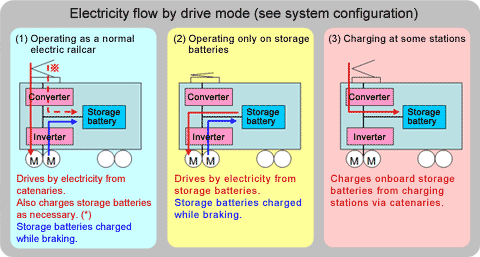 |
 |
 |
Development of Catenary and Battery-powered Hybrid Railcar System 
|
Overview |
 |
JR East has developed diesel hybrid railcars (Kiha E200 Type) that entered service on the Koumi Line in 2007. The company is also proceeding with development of the catenary and battery-powered hybrid railcar system as a new measure to reduce the environmental impact in non-electrified lines. That forms a new operating system to replace diesel railcars. It allows the train to be equipped with large-capacity storage batteries to run on non-electrified lines, and it also has charging stations at stations in non-electrified lines to quickly charge cars storage batteries.
We have developed the experimental car "Smart Denchi Kun" equipped with this system and also developed fast charging stations. Now, we are proceeding with verification of the system by means such as charging and discharging tests with the car and stations. |
 |
 |
 |
Objective of development |
 |
By running electric trains in non-electrified lines, we aim to...
- Reduce the environmental impact (Eliminate engine exhaust gases, and reduce CO2 emission and noise)
- Improve car operation efficiency (Allow mutual car operation on electrified and non-electrified lines)
- Introduce the efficient car maintenance process (Reduce engines, transmissions and other high-maintenance mechanical components)
|
 |
System configuration and development issues |
 |
 |
 |
Energy flow by drive mode |
 |
 |
 |
 |